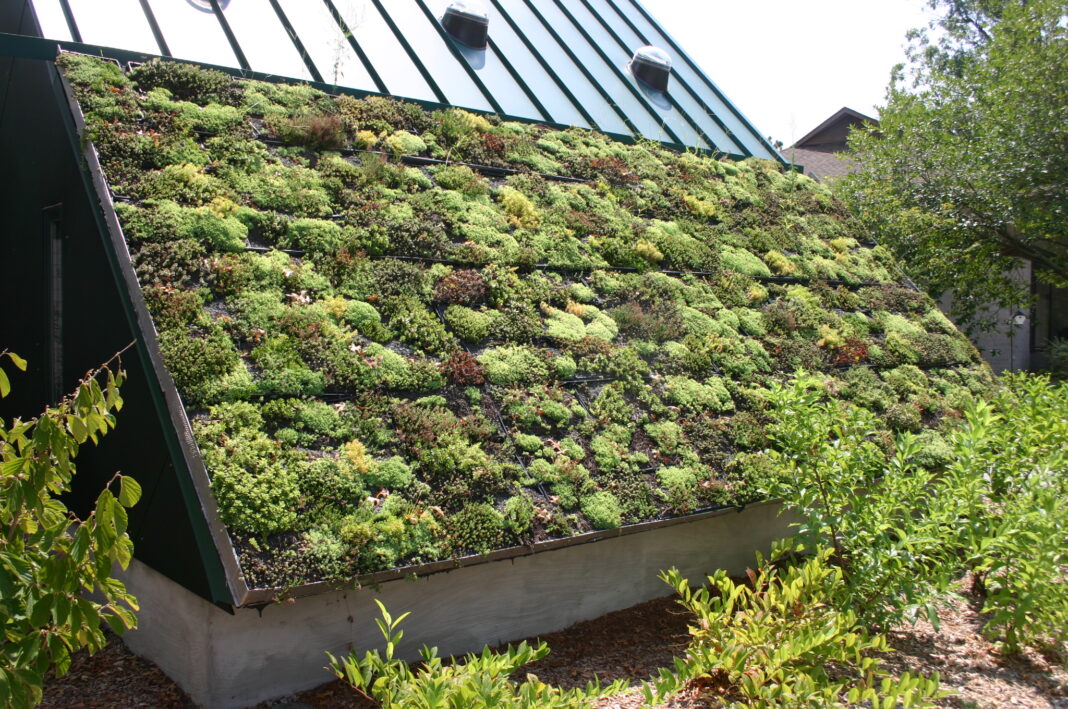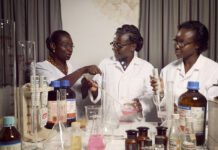Nature-based solutions to urban pressures
The speed and scale of urbanization is an unrelenting process whose pressures can be felt at both local and global levels. The UN estimates that 2007 was the year in which the scales were tipped and more of the world’s population lived in urban areas than in rural areas. It’s predicted that by 2050 this urban proportion will jump to two-thirds of the world’s population, while in Europe this is closer to 84% (Pineda-Martos and Calheiros, 2021). Thus far, this has happened largely at the expense of natural ecosystems, which have been replaced by concrete and other impervious surfaces.
At a local level, this can be experienced as rising temperatures (caused by Urban Heat Islands), food insecurity, and an inability to adequately manage the intensified weather events that go along with climate change (such as heavy rainfall). Urban residents are also often disconnected from natural spaces and the positive psycho-social health impacts of that connection — an urban condition that has been highlighted by the COVID-19 pandemic. At a global level, rising temperatures from increasing greenhouse gases and our inability to adequately capture these gases, drives rising sea-levels and ecological collapse at multiple levels, teetering on the brink of irreversibility with potential runaway feedback loops.
The impacts of this rapid urbanization underscore the need for ‘re-naturing cities’ with nature-based solutions such as green roofs (Pineda-Martos and Calheiros, 2021). The European Commission (2021c) defines nature-based solutions as addressing global and societal challenges while providing environmental, social, and economic benefits, and helping build resilience. In this regard, green roofs are a nature-based solution that holds great potential. In terms of biodiversity and ecosystem services, they provide a range of benefits such as thermal regulation and insulation, stormwater runoff control, habitats for pollinators, food production, recreational and relaxation opportunities, the facilitation of social cohesion, aesthetics, noise insulation, and also protection of the building structure (roof longevity) (Pineda-Martos and Calheiros, 2021).
The water-energy-food nexus
Because rooftop space in the city is finite, maximizing the impact of a green roof is a practical consideration. Some useful distinctions concern the depth and type of soil utilized. This is often described as intensive versus extensive green roofing typologies. Extensive green roofs typically concern succulents and other vegetation that requires limited soil depth and maintenance, and can therefore be added onto existing buildings. Conversely, productive green roofs (intensive) used for growing food crops utilize deeper soil or growing media and require continued maintenance. This means that their inclusion needs to be factored into initial building designs.
Increased soil depth translates into enhanced insulation and higher water retention rates (Rahman and Ahmad, 2012). This reduces building energy consumption and decreases the energy costs associated with wastewater treatment. On top of increased water retention, soil depth has also been shown to increase evapotranspiration rates. This involves a complex process of evaporating water from plant and soil surfaces, which emits energy and lowers temperatures. Including blue roof voids underneath or around green roofs has been shown to improve evapotranspiration and its impact on cooling even further (Rahman and Ahmad, 2012).
At the scale of individual buildings, this alters the energy balance, reducing energy consumption for heating in the Winter and cooling in the Summer (Wright et al. 2021). At the scale of the city, it contributes to reducing the urban heat island. Concerning productivity, food insecurity is increasingly a problem that cities face. As urbanization continues apace and dependence on rural breadbaskets and their complex supply chains only increase. Thus, productive green roofs have the potential to address the water–energy–food nexus, in which multiple ecological benefits must be considered in conjunction with one another (Wright et al. 2021). As populations in cities grow, so too does the demand for food, energy and water, which are strongly correlated with one another.
Aesthetic, economic, environmental, social
Besides the water, energy and food benefits mentioned above, urban agriculture also contributes to a host of functional aesthetic factors to produce better living environments. This includes a reduction in greenhouse gas emissions, improved air quality, better sound insulation, fire resistance; providing small-scale green open spaces, and creating wildlife niche habitats (Rahman and Ahmad, 2012). As well as various insects and bugs, this includes pollinators such as bees, butterflies, and birds, which are critical components to regenerating biodiversity in our cities. The aesthetic beauty of these pollinators also provides a much welcomed re-naturing of our concretized urban sightscapes.
In addition, green roofs can increase the aesthetic value of a building façade and provide visual relief from the city hustle bustle. It’s now well established that a view of green plants and nature corresponds with beneficial health and improved productivity. Employees with a view of nature are generally less stressed, have lower blood pressure, report fewer illnesses, and experience greater job satisfaction (Rahman and Ahmad, 2012). Concerning expanded opportunities for social engagement, particularly in light of the COVID-19 pandemic with social distancing policies, productive green roofs provide outdoor spaces where community interaction is promoted in safe and healthy ways. Greenery is also brought closer to building occupants who may not be able to travel to parks or urban farms.
Regarding their economic and health impacts, productive green roofs can provide fruit and vegetables to residents during times where either wallets or supply chains become squeezed, as many experienced during the panic of COVID-19 (Suryantini et al. 2021). Time spent traveling to the market can also be saved, including the increased stress of spending time in these transmissible spaces. Fruit and vegetables also need to be couriered in by trucks, so a reduction in demand on these supply chains effectively contributes to reducing the carbon footprint of a city. For homeowners, the stabilization of roof temperatures contributed by green roofs can also extend the lifespan of the roof by more than 20 years (Rahman and Ahmad, 2012).
While at first glance, it may appear that solar panels and green roofs are in competition with one another for space, research has actually demonstrated synergistic effects between the two (Wright et al. 2021). When positioned strategically, photovoltaics have the potential to provide shade to soil/vegetation and slow down evapotranspiration rates to increase soil moisture by up to 15%. Wright et al’s. (2021) research demonstrated a 35–73% increase in overall land productivity when strategically combining photovoltaics and agriculture, which can add over 30% in additional economic value. This demonstrates the multifaceted economic savings that green roofs can produce.
Psycho-social health benefits of urban farming
For planners, frequent objectives of starting an urban farming initiative include creating a sense of community, integration opportunities, time-out from office work, and facilitating self-sufficiency (Hirsch et al. 2016). And from the perspectives of citizens, researchers have found that motivation to participate in urban farming initiatives often overlaps with these (Hirsch et al. 2016). Social integration and socializing are mentioned as drivers, as well as the ecological and cultural benefits of growing fresh and healthy food locally. In general, Hirsch et al. (2016) found that what is important to participants is an improved quality of life and satisfaction of personal needs. Urban farms are community-oriented and participatory neighborhood spaces, providing opportunities for meeting and learning with others in the city (Harada et al. 2021).
Research has explored the positive impact that urban farms have on the mental health of urbanites. When comparing older adults that engage in urban gardening with those who don’t, they demonstrate better scores on health indicators such as physical activity level and self-rated health and life satisfaction. This includes improvements to mental health factors such as self-esteem, mood, physical and psychological well-being, and social cohesion (Harada et al. 2021).
Harada et al. (2021) explored the difference in health changes between participants in allotments and experience farms in Tokyo, Japan, where planning policies (such as The Productive Green Land Act) have managed to accommodate urban farms successfully within the city. In simple terms, allotment farms are arable plots of land where participants are able to farm productively on their own or in groups; experience farms on the other hand involve communities under the guidance of an experienced farmhand that teaches them how to farm productively and effectively.
After controlling for differences in physical activity, participants in experience farms reported significant improvements in self-rated health and mental health, while participants in allotments did not (Harada et al. 2021). These results suggest that, rather than being attributed to increased physical activity on farms, health improvements may also be the product of social interactions among participants and with farmers (Harada et al. 2021). This implies that when considering improved post-pandemic planning, social interaction appears to be an important element to program into these productive green spaces. Urban farming appears to be a noteworthy combatant to the main challenges that occur as a result of the COVID-19 panic, improving psychological health and access to healthy, fresh and nutritious food (Suryantini et al, 2021).
SPATIAL POLICY
The Biodiversity Strategy, recently adopted by the European Commission, represents a useful policy tool for conserving and expanding on the biodiversity we have left in cities (Pineda-Martos and Calheiros, 2021). Both in terms of building back better post-pandemic, and for tackling climate change and its impacts, green roofs offer an important resource for managing these socio-ecological pressures. The future is urban, and our future resilience and health demand a re-naturing of our cities. Productive green roofs are a tool that we simply can’t ignore in delivering on this mandate.
References
- European Commission (2021c) The EU and nature-based solutions. In: Nature-based solutions – nature-based solutions and how the Commission defines them, funding, collaboration and jobs, projects, results and publications. European Commission website.
- Harada, K., Hino, K., Iida, A., Yamazaki, T., Usui, H., Asami, Y. and Yokohari, M., (2021). How Does Urban Farming Benefit Participants’ Health? A Case Study of Allotments and Experience Farms in Tokyo. International Journal of Environmental Research and Public Health, 18(2), p.1-13.
- Hirsch, D., Meyer, C., Klement, J., Hamer, M. and Terlau, W., (2016). Urban AgriCulture and Food Systems Dynamics: Urban Gardening and Urban Farming of the Bonn-Rhein-Sieg region, Germany. In: System Dynamics and Innovation in Food Networks. St. Augustin: International Journal on Food System Dynamics, pp.406-419.
- Pineda-Martos, R. and Calheiros, C., (2021). Nature-Based Solutions in Cities—Contribution of the Portuguese National Association of Green Roofs to Urban Circularity. Circular Economy and Sustainability, 1(3), pp.1019-1035.
- QIU, G., LI, H., ZHANG, Q., CHEN, W., LIANG, X. and LI, X., (2013). Effects of Evapotranspiration on Mitigation of Urban Temperature by Vegetation and Urban Agriculture. Journal of Integrative Agriculture, 12(8), pp.1307-1315.
- Rahman, S. and Ahmad, H., (2012). Green roofs as urban antidote: A review on aesthetic, environmental, economic and social benefits. South-East Asian Technical University Consortium.
- Suryantini, A., Anjani, H., Fadhliani, Z. and Taryono, (2021). Perceived benefits and constraints in urban farming practice during COVID-19. In: The International Conference on Smart and Innovative Agriculture. Yogyakarta: IOP Conf. Series: Earth and Environmental Science, pp.1-7.
- Wright, J. Lytle, J. Santillo, D. Marcos, L. Mai, K.V. (2021). Addressing the Water–Energy–Food Nexus through Enhanced Green Roof Performance. Sustainability, (1972)13, p.1-13.
Featured illustration: Ryan Somma.





